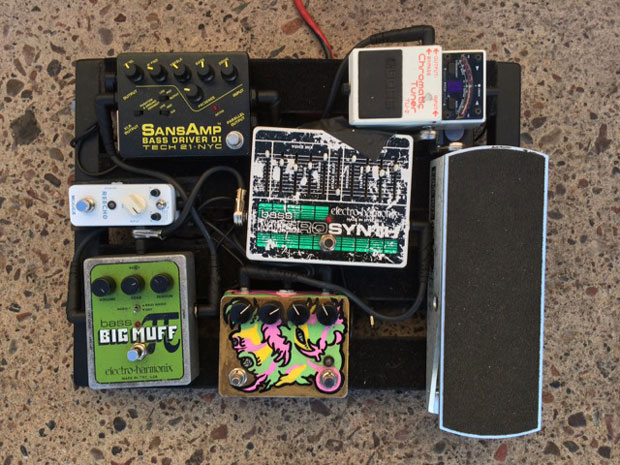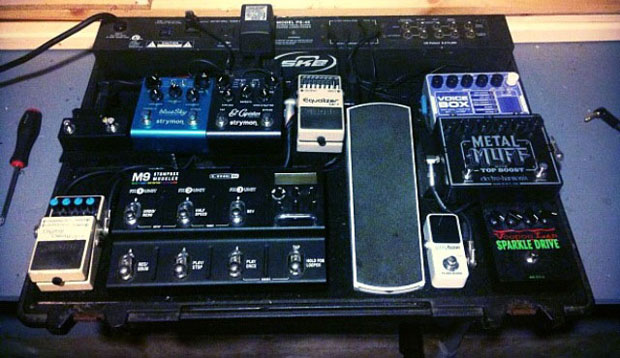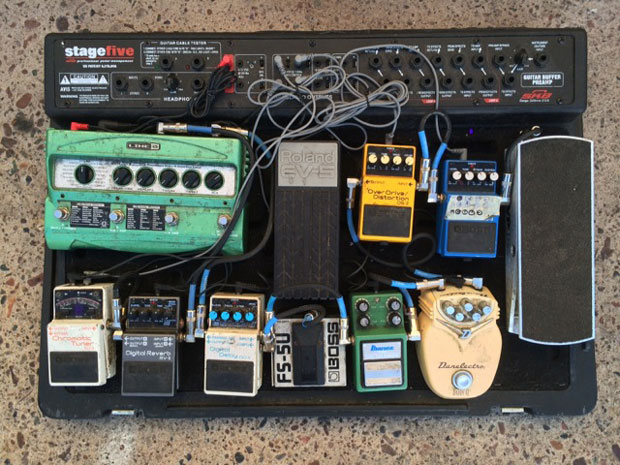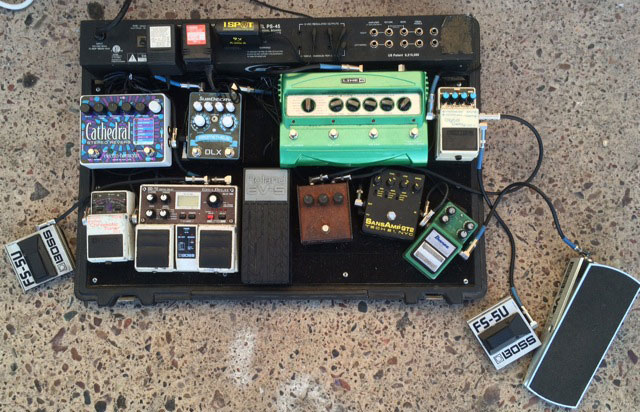Caspian’s Guide to Creating a Wall of Sound: Four Essential Pedalboard Tricks

Massachusetts post-rockers Caspian have been road-dogging in support of their new EP, Hymn for the Greatest Generation. They've also been compiling a few essential survival tips for the touring musician. In this latest installment, guitarist Philip Jamieson reveals the band's pedalboard secrets when it comes to creating a wall of sound.
For the first installment of this series, check out Erin Burke-Moran's column, "Tour Tips: Five Essential Ways to Sleep in the Van."
Each of us delivers four different pedal tricks consistent with our never-ending attempt to blanket you with an immersive wall of sound every night.
Have at them below!

Philip Jamieson: I’ve been messing around with the decay level on my Strymon BlueSky in conjunction with live loops I create on the fly with the Line 6 M9. I have the Strymon toward the end of my signal flow, which is essential here. Have the mix level of the Strymon at 100% and the decay level at 0%. Record a loop on the Line 6, maybe add a harmony or another texture, and once you have what you want looped up, slooowwwwly turn the decay knob up to 100% on the BlueSky. The once-dry loop you had will slowly ameliorate into a thick, cloudy haze. It’s like listening to your defined, clear melody evaporate into thin air and start floating away, morphing into a drone. Switch the BlueSky to the Cathedral setting for added effect, though it can get messy. I prefer the Plate setting. I use this at the beginning of the end on “Gone in Bloom and Bough” live.

Jonny Ashburn: Rolling back your tone knob on your neck pickup in combination with a fuzz pedal like the Big Muff or Daddy O makes for a killer and very different distortion sound. This trick definitely works best with dual humbuckers. You end up with a Robert Fripp kinda sound.

Erin Burke-Moran: One thing I love to mix up is delays. Using multiple delays can be a very interesting way to color your sound. A specific setting I enjoy consists of two delays and the added touch of a reverb pedal. Start with the first delay on a normal repeat setting with the feedback at about 12 o’clock or a little more to add some depth to what you are going to play. The second delay in your chain should be set to a reverse delay with the effect level all the way up. On most pedals, this should leave you with only the reverse delays coming through while the initial signal is cut. Douse this in some reverb and bring the treble knob on your guitar down almost all the way (I like to solo the neck pickup and use my volume knob to dial back a little bit of the punch). This gives you a sound that reminds me of a soft, delicate wind. It’s excellent for quiet ambient moments.
Get The Pick Newsletter
All the latest guitar news, interviews, lessons, reviews, deals and more, direct to your inbox!

Jani Zubkovs: As a bass player, my board is very basic. A small detail I use to create a different sound involves my Caroline Cannonball Custom, which is the multi-colored pedal in the center of the board. It’s an amazing distortion pedal handmade in South Carolina, then hand painted by a local artist. Anyway, the right switch is for the distortion channel, but if you hold down the left switch while the pedal is activated, it enters into what they call “Havoc” mode. Basically, the pedal loops the signal through itself and creates all sorts of noise and sustain. I’ll activate this switch near the end of a song or when some sort of epic part is needed.
“If, or when my current power supply fails me, I’ll probably look to this exact unit as a replacement”: Harley Benton PowerPlant ISO-10AC Pro review
“An all-in-one power solution, on or off the grid”: D’Addario’s rechargeable XPND Pedal Power promises to make your ’board more portable – but only if you daisy chain









